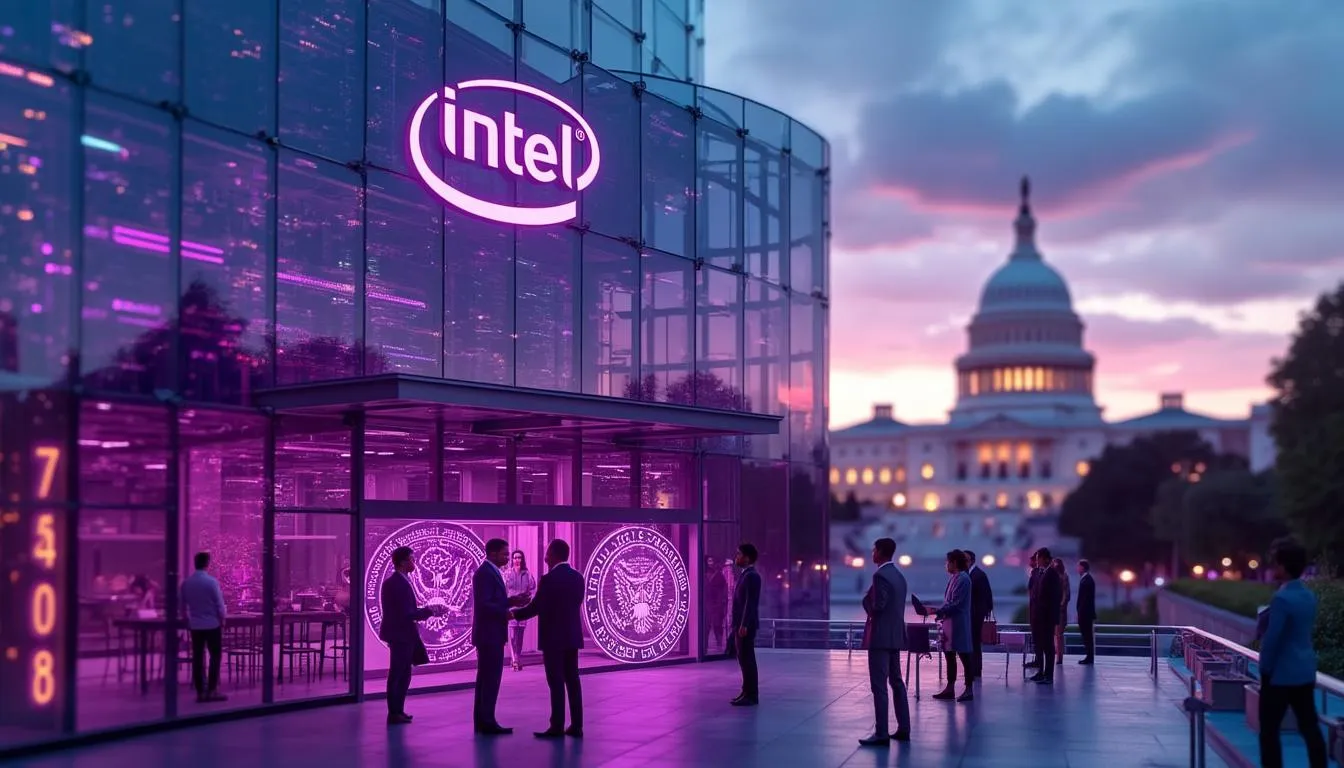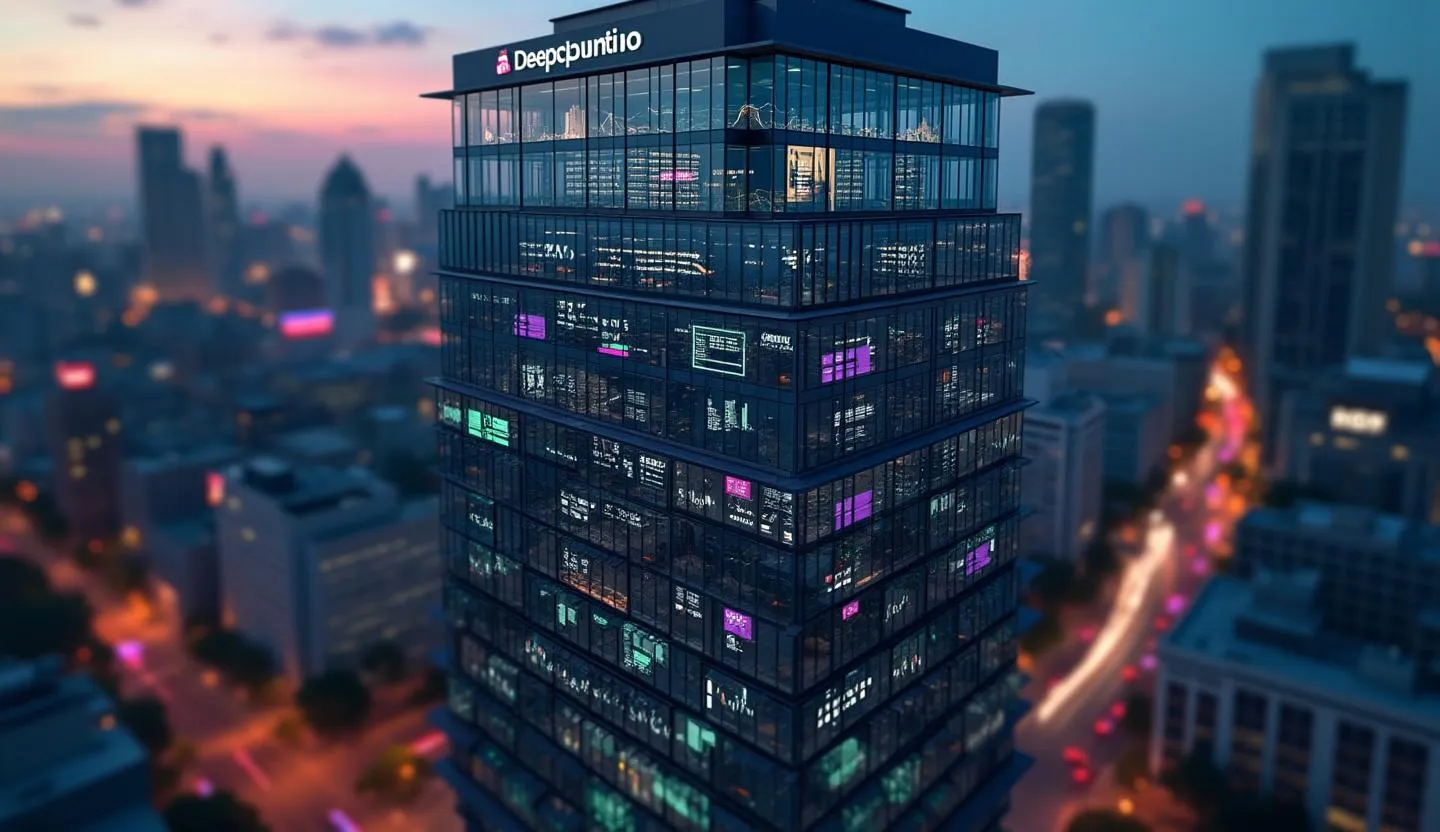Washington’s Gamble: The Chip Giant at the Heart of Industrial Policy
In a session marked by sectoral churn, Intel Corp (INTC) has emerged as a standout gainer in the technology space. With shares jumping 3.66% to $24.74 on staggering volume (272.1M shares by late session, far above norms), the world’s best-known chipmaker is once again front and center in the debate over America’s technological future. Recent headlines suggest the U.S. government may take a direct stake in Intel, leveraging CHIPS Act funds in a bid to keep the domestic semiconductor industry competitive. These developments position Intel not just as a market mover, but as a bellwether for the intersection of policy and innovation in the global chip wars.
Key Takeaways
INTC surged 3.66% to $24.74, with trading volume (272M+) far exceeding average levels.
News catalyst: Reports of the U.S. government considering a direct stake in Intel, potentially using CHIPS Act subsidies.
Sector context: Intel’s rally stands out in a mixed tech landscape amid renewed focus on supply chain security and domestic chip production.
Analyst sentiment: Mixed, with some urging caution as operational execution lags rivals despite policy tailwinds.
Ongoing debate: Can government intervention solve Intel’s competitiveness gap versus top Taiwanese and Korean foundries?
Intel’s Big Bet: Can Policy Outrun Execution?
A Company at the Crossroads
Founded in 1968, Intel once set the pace for semiconductor innovation. But in recent years, the company has struggled to keep up with Taiwan Semiconductor Manufacturing Co. (TSMC) and Samsung, falling behind in advanced chipmaking nodes. Despite a global chip shortage and surging demand for AI and data center hardware, Intel’s execution hiccups and loss of process leadership have put it under intense scrutiny from both investors and policymakers.
Today’s rally is catalyzed by news that the U.S. government—reportedly via the Trump administration—is weighing an unprecedented move: acquiring a direct stake in Intel.
As reported by CNBC, “The Trump administration is reportedly in talks with Intel to have the U.S. government take a stake in the struggling company. But that won't solve the company's core issue: catching up in advanced chip manufacturing.” CNBC Television
Why This Move, and Why Now?
The CHIPS Act, passed in 2022, earmarked over $50 billion to revive American chipmaking, with Intel as its poster child. Yet, as Bloomberg’s Joe Deaux notes, “The Trump administration is said to be considering using funds from the Chips Act to take a stake in Intel, according to sources.” Bloomberg Technology This hints at a more aggressive industrial policy—direct equity investment rather than just grants or tax breaks.
Sector watchers are divided. On Bloomberg Technology, Mizuho’s Jordan Klein cautioned, “Intel still needs to prove itself to customers, even if the US government takes a stake in the company.” Bloomberg Technology The underlying challenge: government money can buy time, but not necessarily operational excellence.
Performance in Focus: Outpacing the Market
Intel’s 3.66% jump to $24.74 stands in stark contrast to the broader market’s muted tone. With volume topping 272 million shares—well above its daily average—the move signals broad institutional and retail engagement. Compared to the previous close at $23.86, the surge reflects both short-term speculation and longer-term bets on a structural policy shift.
Metric | Current Session |
|---|---|
Price | $24.74 |
Change % | +3.66% |
Volume | 272,106,720 |
Previous Close | $23.86 |
The stock’s recent performance, however, comes after a long period of stagnation. While tech peers have notched double- or triple-digit gains during the AI-fueled rally, Intel has lagged, weighed down by manufacturing missteps and capital intensity.
Analyst Perspectives: Balancing Hope with Skepticism
While today’s market action is bullish, the analyst community remains wary. The consensus: policy support is necessary but not sufficient. Without a return to technical leadership—especially in sub-3nm manufacturing—Intel risks becoming a permanent laggard.
The mixed analyst sentiment is reflected in recent price target adjustments, with only a handful of upgrades as investors await concrete progress on Intel’s foundry ambitions and execution of its IDM 2.0 strategy.
Industrial Policy Meets Market Reality
Strategic Implications of a Government Stake
A direct government stake in Intel would be a historic move for U.S. industrial policy, signaling Washington’s willingness to intervene at the ownership level to secure supply chains and technological sovereignty. Such a step could stabilize Intel’s finances and accelerate capacity expansion, but it also raises thorny questions about governance, innovation incentives, and global competitiveness.
Sectoral Impact: A New Era of Tech Nationalism?
This development comes amid heightened tensions with China and renewed calls for "friend-shoring" critical supply chains. If successful, a government-backed Intel could anchor a new wave of domestic capacity, potentially reshaping the competitive landscape for years.
However, as sector analysts warn, execution remains paramount. The contrast with TSMC—now the world’s undisputed process leader—underscores the scale of the challenge. Any policy-driven rally must ultimately be underpinned by technological catch-up and customer wins, not just capital infusions.
Conclusion: Intel’s Unfinished Comeback
Intel’s outsized gain today is about more than a single trading session—it is a referendum on the future of American industrial policy and the company’s place in the global technology order. Investors are betting that government intervention, coupled with strategic investments in capacity, can jumpstart Intel’s renaissance. Yet the path forward remains fraught: capital alone cannot fix execution gaps or restore lost technical leadership.
Intel’s surge is a potent reminder that policy and market forces are now deeply intertwined in the semiconductor sector. As the news cycle churns and government deliberations continue, Intel’s performance will remain a litmus test—not just for itself, but for the entire U.S. push to regain chip supremacy.

.svg)
.svg)
.svg)
.svg)

.svg)

.svg)
















